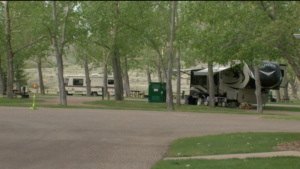Archivebate
In the ever-evolving landscape of human sexuality, unconventional forms of gratification continually emerge, pushing the boundaries of understanding and acceptance. One such phenomenon that has gained traction in recent times is Archivebate – a niche practice that intertwines the realms of historical archives and sexual arousal. While seemingly obscure, Archivebate serves as a fascinating case study of human sexuality’s multifaceted nature and the diverse ways individuals seek pleasure and fulfillment.
Exploring the Origins of Archivebate
To comprehend the essence of Archivebate, one must delve into its origins. The term itself is a portmanteau, combining “archive” and “masturbate,” signifying the act of deriving sexual pleasure from historical documents, artifacts, or narratives. While the exact genesis of Archivebate remains nebulous, its roots can be traced back to the intersection of two fundamental human instincts – curiosity and sexuality.
Historically, individuals have harbored a fascination with the past, seeking to unravel its mysteries and understand the intricacies of bygone eras. Concurrently, human sexuality encompasses a vast spectrum of desires and preferences, transcending conventional norms. It is within this intersection that Archivebate finds its niche, capitalizing on the allure of history to stimulate erotic arousal.
The Psychology Behind Archivebate
At its core, Archivebate exemplifies the interplay between cognitive processes and sexual stimuli. Psychologically, the arousal experienced during Archivebate is likely attributed to a combination of factors, including nostalgia, intellectual stimulation, and the taboo nature of deriving pleasure from non-conventional sources.
Nostalgia, a powerful emotional trigger, often evokes feelings of longing and sentimentality for past experiences or eras. When coupled with sexual arousal, the fusion of nostalgia and eroticism can intensify sensations, creating a unique and deeply personal form of gratification.
Moreover, the intellectual aspect of Archivebate cannot be overlooked. For many practitioners, the act of engaging with historical material serves as a mental stimulant, triggering cerebral arousal alongside physical sensations. The synthesis of intellectual curiosity and sexual desire amplifies the overall experience, transforming archival exploration into a profoundly erotic endeavor.
Varieties of Archivebate: From Manuscripts to Museums
Archivebate manifests in various forms, each tailored to individual preferences and inclinations. One prevalent subtype involves the consumption of written historical materials, such as letters, diaries, or literary works. For some, the intimacy inherent in personal correspondence imbues these documents with an added layer of eroticism, fostering a sense of connection with individuals long departed.
Similarly, visual artifacts, including paintings, photographs, and sculptures, serve as potent stimuli for Archivebate enthusiasts. The aesthetic allure of these representations, coupled with their historical significance, can evoke intense sensual responses, blurring the boundaries between art appreciation and sexual gratification.
Museum settings also provide fertile ground for Archivebate exploration. The curated assemblage of historical artifacts offers a sensory feast for aficionados, who derive pleasure from admiring ancient relics while indulging their carnal desires. However, practitioners must navigate the fine line between respectful engagement with cultural heritage and objectification of historical objects.
Ethical Considerations and Challenges
As with any unconventional sexual practice, Archivebate raises ethical considerations and challenges. Foremost among these is the issue of consent, particularly concerning historical figures whose personal writings or likenesses are involved. While these individuals may be long deceased, ethical dilemmas arise regarding the appropriateness of deriving sexual pleasure from their legacy without their explicit consent.
Furthermore, the preservation and integrity of historical artifacts must be upheld, safeguarding them from potential damage or misuse. Practices such as handling delicate manuscripts or engaging in sexual acts within museum premises pose risks to cultural heritage and demand responsible conduct from Archivebate practitioners.
Additionally, the societal stigma surrounding non-normative sexual behaviors necessitates discretion and respect within the Archivebate community. Open dialogue and education can help foster understanding and acceptance, dispelling misconceptions and promoting informed discourse on the intersection of sexuality and historical engagement.
Conclusion:
Archivebate stands as a testament to the boundless diversity of human sexual expression, transcending traditional paradigms to forge new frontiers of eroticism. By intertwining the realms of history and sexuality, Archivebate challenges preconceived notions, inviting individuals to explore unconventional avenues of pleasure and self-discovery.
As society continues to evolve, so too will our understanding and acceptance of diverse sexual practices. By approaching phenomena like Archivebate with an open mind and a commitment to empathy and respect, we can foster a culture that celebrates sexual diversity while upholding ethical principles and preserving cultural heritage for generations to come.






